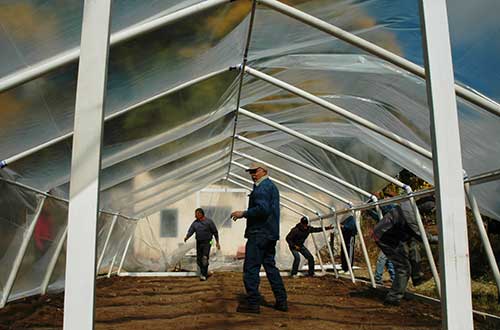Extending the Growing Season In New Mexico

Most fruits and vegetables have a distinct season in which they do best. For example, we expect to see New Mexico green chile available at our local grocery stores from August through September, and red chile later into the fall. We do not, however, expect to find New Mexico green chile in May. If we find it in the stores at that time of year it is likely from another part of the country where production is possible, or it was grown in a greenhouse under controlled conditions. A third option is that a grower got a head start on the growing season by using season extension. Season extension technologies allow a grower to produce a crop earlier or later into the year than we would expect if it were grown in an open field environment. Often, this reduces competition and can demand higher prices.
Extending the vegetable production season without incurring prohibitive costs is an important goal of many farmers, especially small and beginning farmers with limited resources. Extending the season with high tunnels allows for a more constant income flow and some control of the crop growth environment. High tunnels can provide protection against some insects, early freezes, hail, and other weather events. High tunnels can also facilitate better market planning. Season extension technologies alter the growing environment equivalent to moving three United States Department of Agriculture (USDA) Plant Hardiness Zones to the south, which makes production of spinach and lettuce in cold winter weather possible (Coleman, 2009; Wells and Loy, 1993).
The growing season (time from last to first killing frosts) can be extended in various ways in New Mexico. This site was designed to bring together extension and research resources from around the state that can help you extend your growing season.

